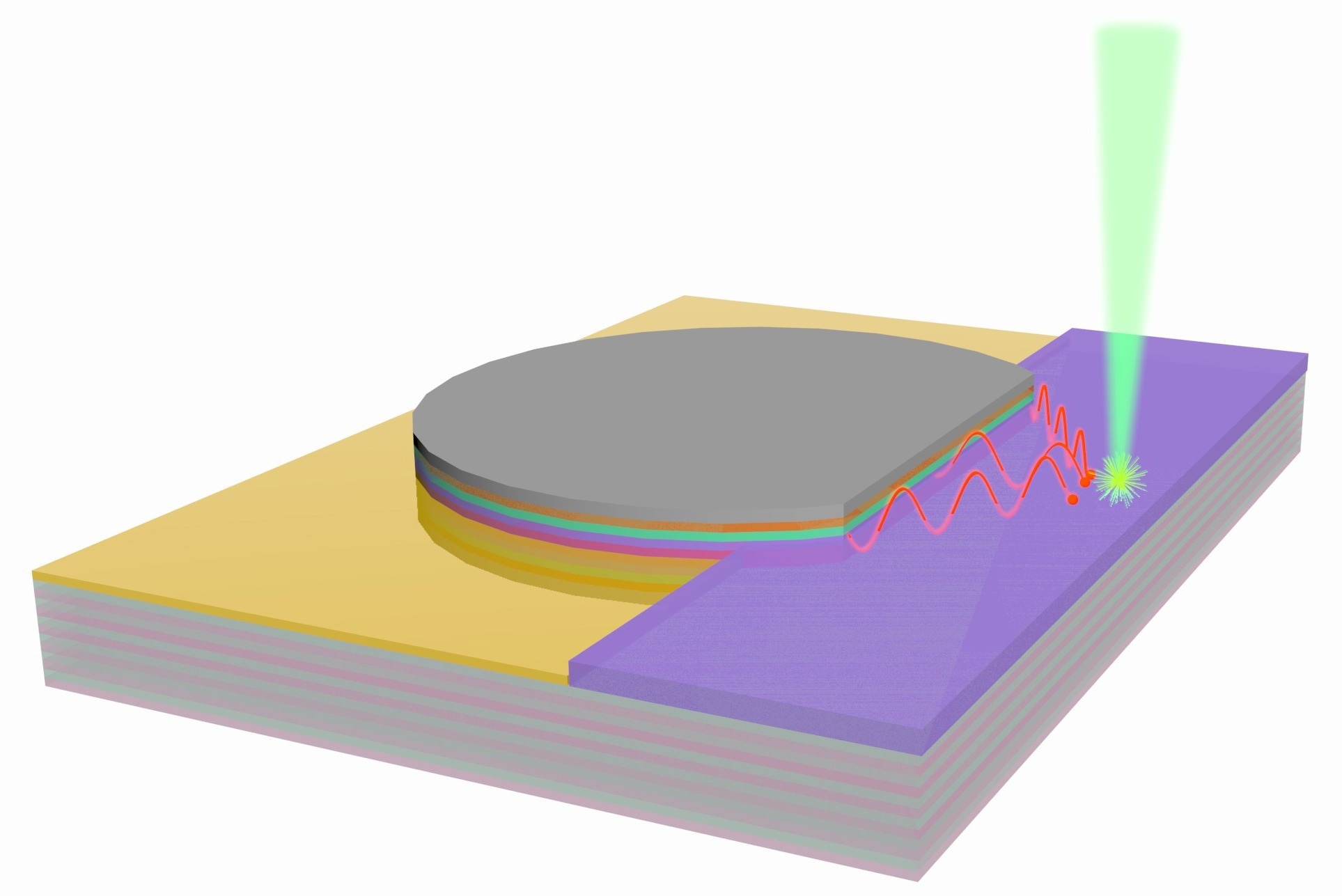Scientists created a new sort of high-efficiency photodetector based on the photosynthetic complexes used by plants to convert sunlight into electricity. Photodetectors convert photons into electrical impulses and are used in cameras, optical communication systems, and a variety of other purposes.

Our devices combine long-range transport of optical energy with long-range conversion to electrical current."
Stephen Forrest, Study Team Leader, University of Michigan
“This arrangement, analogous to what is seen in plants, has the potential to greatly enhance the power generation efficiency of solar cells, which use devices similar to photodetectors to convert sunlight into energy,” Forrest said.
Several plants’ photosynthetic complexes are made up of a huge light-absorbing region that transports molecular excited state energy to a reaction center, where it is transformed into a charge. While this configuration is extremely efficient, replicating it needs long-range energy transmission in an organic substance, which has proven problematic.
The scientists used polaritons, which are unique quasiparticles, to accomplish this seemingly difficult operation. Forrest and coworkers reported their new detector, which creates polaritons in an organic thin film, in Optica, Optica Publishing Group’s publication for high-impact research.
A polariton combines a molecular excited state with a photon, giving it both light-like and matter-like properties that allow long-range energy transport and conversion. This photodetector is one of the first demonstrations of a practical optoelectronic device based on polaritons."
Stephen Forrest, Study Team Leader, University of Michigan
Taking a Cue from Plants
The scientists conceived the new detector many years ago while they were exploring methods to improve solar cells.
“After observing polariton propagation over long distances in simple structures such as a mirror with an organic film on its surface, we thought it might be possible to make a photosynthetic analog using polaritons. However, it was quite difficult to figure out how to build such a device,” said Forrest.
The scientists had to construct features in an organic semiconductor thin film that allowed polariton propagation over extended distances to develop a photodetector built on polaritons. Researchers also had to find out how to insert a small organic detector within the propagation region in such a way that the polariton-to-charge transformation was successful.

Image Credit: Quality Stock Arts/Shutterstock.com
We borrowed from structures that we previously designed to create efficient organic photovoltaic cells. It was a bit fortuitous that these structures allowed efficient harvesting of the energy carried by polaritons. Polaritons still hold some mysteries, and this is a new way of using them, so we weren’t sure if it would work,” said Forrest.
Long-Distance Propagation
The scientists used a unique Fourier plane microscope to investigate polariton propagation in their novel technology. Due to the detector’s peculiar construction, they had to devise a method for precisely quantifying the results and putting them in the context of typical detectors well known to the optics world.
The results demonstrated that the novel photodetector converts light to electrical current more efficiently than a similar silicon photodiode. It can also collect light from regions as small as 0.01 mm2 and convert light to electrical current across extremely long lengths of 0.1 nm. This is three orders of magnitude more than the energy transmission distance of photosynthetic complexes.
Most polaritons have previously been seen as stationary quasiparticles in closed cavities with extremely reflecting mirrors on both the top and bottom. The new findings shed light on how polaritons propagate in open systems with a single mirror. The novel technology also enabled the first observations of the efficiency with which incident photons can be transformed into polaritons.
“Our work shows that polaritons, in addition to being interesting science, are also a goldmine of applications yet to be discovered. Devices such as ours provide an unusual, and possibly unique, method to understand the fundamental properties of polaritons and to enable yet-to-be imagined ways to manipulate light and charge,” said Forrest.